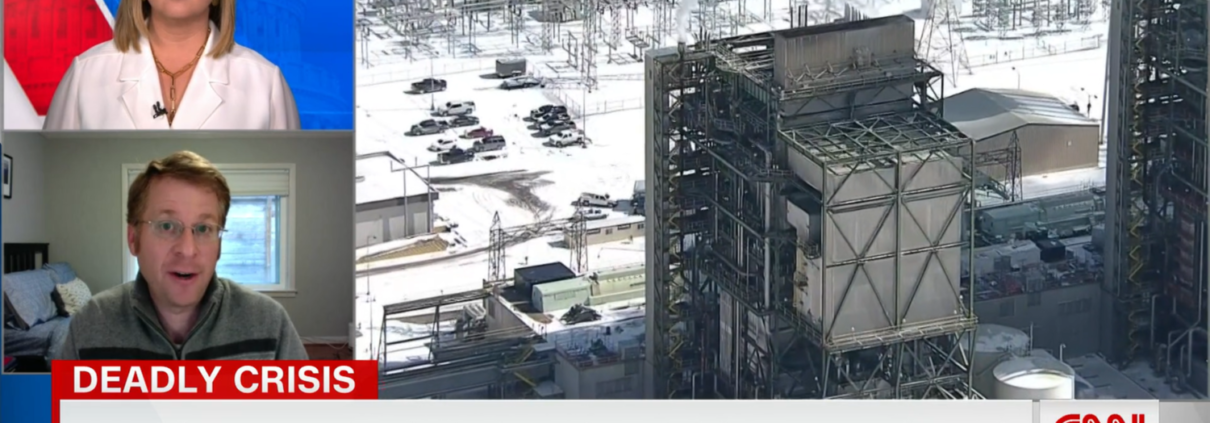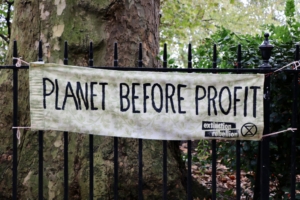Even After Texas Thawed, Policy Discourse Remains Frozen
Here’s What You Need To Know
Last month, as extreme cold swept across the southern United States, more than four million Texans were left with rolling, often extended, power outages. As the state and federal governments continue to assess what led to the grid’s failures, interests on both sides of the debate, the mainstream media, and commentators have dug into their partisan positions and are already pointing blame at the other side.
While there is much to discuss regarding the policy implications of the blackouts and how energy providers can prevent extreme weather-related blackouts from happening again, the response by political figures and the media have made it difficult to discern what went wrong and where attention should be placed.
Last year, we asked, “what if seemingly well-intentioned reporters at reputable organizations run stories misreporting events, stating opinions as facts, or otherwise misrepresenting developments?” Now, even as Texas thaws, our discourse remains frozen and that question should be front of mind for public affairs professionals confronting the new reality of issue debate in this era of polarized and fragmented media. Here’s what you need to know to navigate it successfully…
Subscribe to Receive Insights
"*" indicates required fields
News Events Have Become Opportunities To Score Points
News events today can become vehicles for advancing pre-determined agendas by a wide range of stakeholders in debates in which you may not have even realized you were participating. Whether it be activist or advocacy groups, elected officials, think tanks, competitors (either in your industry or a competing one), or another group of stakeholders, when news breaks or a crisis hits, everyone takes to their corner and digs into their side’s arguments to lay blame for what happened.
In Texas, individuals and groups on the right blamed wind power and Texas’ move toward renewables for the blackouts, while those on the left blamed the state’s deregulatory efforts that kept its energy grid separate from the rest of the nation’s. Like many such debates, however, there is enough blame to go around and the reasons behind the blackouts are far more nuanced than wind turbines or deregulation. Yet those messages are often drowned out as the media fuels the fight. For public affairs professionals, knowing who the stakeholders are and what agenda they are driving is key to staying ahead of the conversation and preventing potential reputation and political harm when critical news breaks.
The Lines Between Press, Pundits, and Advocates Have Become Blurred
Many experts, pundits, and press are also advocates, even if they don’t admit it, while others in the press seem to be “just here for the comments.” Instead of pursuing the truth of what caused the blackouts in Texas, news organizations and networks were quoting experts with preconceived views who offered reasoning that conformed to the media’s desired explanation as to what went wrong, depending on where the media entity lands on the ideological spectrum.
Even generally mainstream press has fallen into this practice. The Associated Press, for example, quoted Mark Jacobson, describing him as a professor at Stanford University, as he claimed the bulk of the blackouts were caused by “natural gas and coal and nuclear” energy. Nowhere did the article mention he is co-founder of the liberal actor Mark Ruffalo-backed Solutions Project, which advocates for 100% clean energy, and that his research on energy issues has been questioned by other notable academics. Meanwhile, in an article questioning whether the Texas blackouts could become a nationwide reality, Fox Business quoted Steve Milloy saying that the events in Texas “debunked the notion that wind is reliable.” While the article identified him as a former Trump EPA transition team member, it did not mention his affiliation with The Heartland Institute, a right-of-center think tank well known to question the science around climate change.
Instead of engaging experts to describe the complex reality as it unfolded, the media focused much of the conversation around enabling these conflicting takes. This narrative and agenda driven media environment is the new reality public affairs professionals who are trying to protect their organizations’ or clients’ political and reputational interests are going to have to navigate moving forward. Understanding the real motivations driving public commentary is crucial to anticipating and responding to it effectively.
The Media Needs a Villain, Even When It’s Not That Simple
When things do not go as expected, media will demand someone to blame, because news in many cases today has become expose without truth seeking. Instead of substantively digging into the root of what is occurring and explaining it with appropriate knowledge and understanding, the press goes on the hunt for a scapegoat that fits a convenient narrative. Once the media sets a narrative, it can be difficult to correct the record.
The events in Texas provide a case in point. Instead of moderating a sober conversation that relied on facts, the media coverage over the Texas crisis was spent debating what energy source was to blame, while also questioning why state officials and energy providers were so unprepared for the storm. However, what was seldom mentioned were the costs associated with preparing for a once in a century storm and how the consumer would respond to increased energy costs they would incur for risks with a very low probability of happening in their lifetime. In today’s media environment, it is a strategic imperative to be proactive in telling your story and advancing the facts before blame is laid and a media narrative sets in, which is increasingly difficult to do as the media continues to fragment into opposing media bubbles.
Public Affairs Pros Must Stay Ahead of Competing Agendas
The public affairs environment today is fraught with tensions corporate public affairs professionals must navigate. In this new age of digital media, political leaders, news outlets, and experts with pre-determined agendas can take to social media and go “viral” in a matter of moments, despite the validity of their claims. That means it is more crucial than ever for public affairs professionals to be prepared to respond. Understanding the risks, stakeholders, and agendas involved is key to protecting your company’s or industry’s business and policy objectives.



